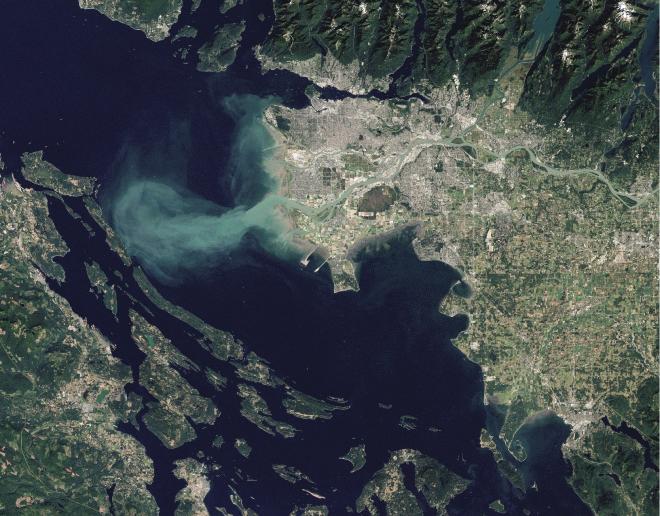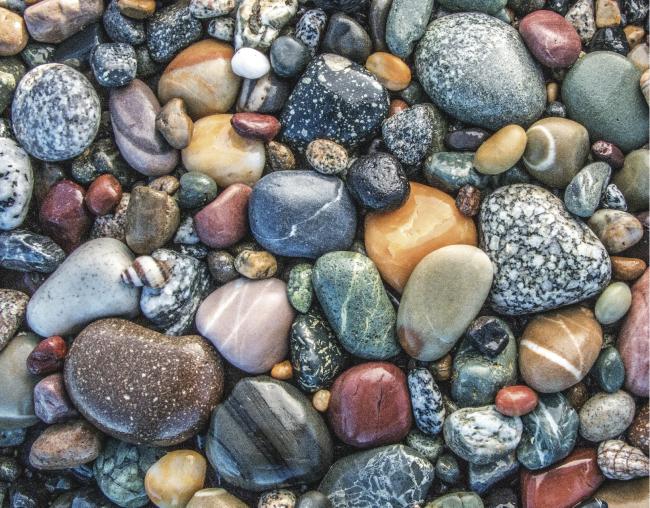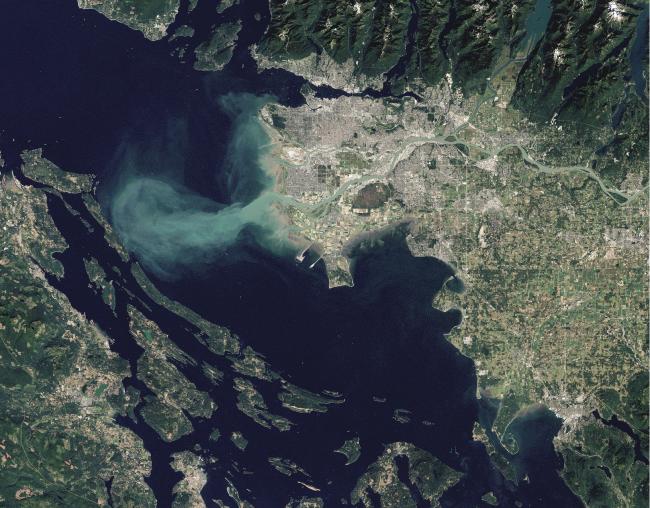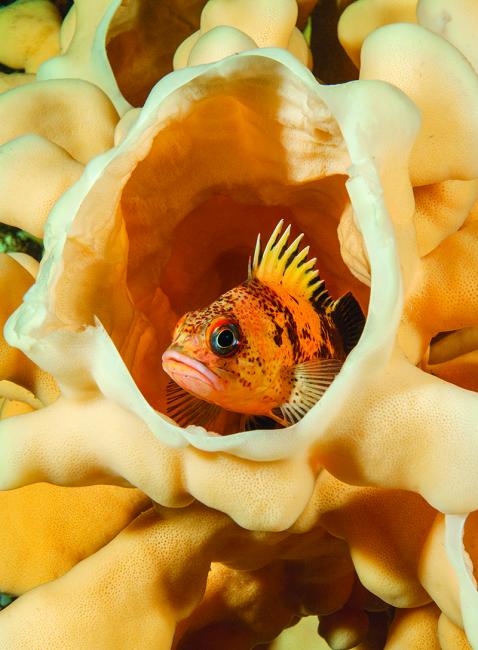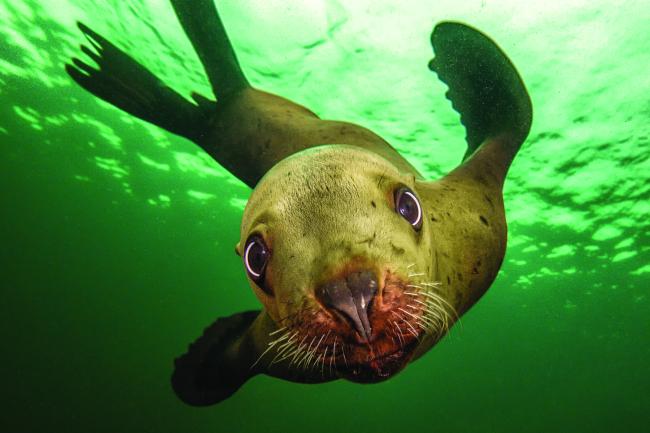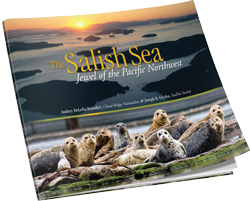New book focuses on the natural history of the Salish Sea
The Salish Sea: Jewel of the Pacific Northwest brings together more than 230 extraordinary images of the Salish Sea. But don't call it a coffee table book. Its lush photos are backed by a serious scientific perspective on this complex and fragile ecosystem.

Scientists have long recognized that ecosystems aren’t defined by political boundaries, but it wasn’t until 2009 that the cross-border region from Puget Sound to the northern reaches of British Columbia was christened the Salish Sea. A new book by biologists Joe Gaydos and Audrey Benedict is one of the first broad-based looks at the natural history of the region as a whole. The Salish Sea: Jewel of the Pacific Northwest brings together new research and a new way of seeing our own backyard. The authors (Gaydos is an Encyclopedia of Puget Sound topic editor) spoke with us about the need for ecosystem thinking, and the extraordinary beauty of this cold-water sea.
EoPS: Your book opens with a question: “What’s in a name?” Why write a book about the Salish Sea rather than Puget Sound and the Georgia Basin?
Joe Gaydos (JG):
From a name perspective, the Salish Sea is a new ecosystem. It was just named in 2009. People recognized it as an ecosystem before then, but it’s not on the map. The idea behind the book was to create a sense of place. You would never say North Everglades or South Everglades or West Amazon. It really functions as a system.
Audrey Benedict (AB):
My perspective—I’m a biologist slash geologist—has always been ecosystem-wide. The beauty of the Salish Sea is it is an integrated ecosystem. Just consider the impact of the Fraser River. The Fraser is viewed by most scientists as the primary nutrient source for the Salish Sea. It shapes everything that happens here, throughout the entire sea system.
JG:
And more water is coming into the Salish Sea from the Fraser River than probably all of the other rivers and streams in Washington combined. So if British Columbia were to say ‘we think we need hydropower,’ or ‘we think we’re going to dam the Fraser,’ that could be catastrophic for us. It's all connected.
EoPS: Who is the audience for this book? Do you see this as a book for the general public, or do you hope scientists will read it as well?
JG:
I think of it as a primer. It’s one stop shopping. If you just want to get the nitty gritty and you want to be inspired, that’s what this book is for. I am hoping that a kindergarten teacher can read parts of it and show pictures to kids, but I’m also hoping that a legislator can pick it up and say ‘well, I never knew this.’ And I hope that any scientist can pick up this book too and say ‘they got that right.’
AB:
What’s been fascinating is that when I tell people I have been writing a book on the Salish Sea, they’ll often say ‘where’s that?’ But the minute I say Puget Sound or the San Juan Islands, they’ll say ‘oh yea.’ [The book] is a means of getting the word out—not only portraying what is unique about this as an inland sea, but getting rid of people’s misconceptions.
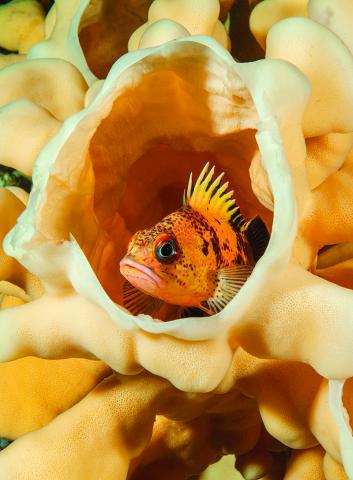
EoPS: What are some of the things that surprised you while writing this book?
JG:
There are so many. Sometimes it was just a description, or a new way of phrasing things. I like how Terry Klinger called the San Juan and the gulf islands “the eggbeaters of the Salish Sea.” Water comes in from the ocean and it’s this mixing tool that everything goes through, and that’s a beautiful analogy. You can just picture a little eggbeater stirring everything up and helping with the productivity. And there were a lot of fun ‘soundbite’ facts too. I think anybody will look at [the book] and go ‘holy mackerel, did you know that a killer whale can dive to 1000 feet?’ Or, ‘wow, did you know that a rockfish that can live to be over 200 years old?’
AB:
For me, I have to admit that I was really misinformed in thinking that in a cold sea I would not be seeing the diversity that I now know is there. There’s a general lack of understanding, even in the state of Washington, of cold-water sea systems. You have only to look at the underwater images that are in the book. I mean, anyone who thinks that the tropics have got anything on the Salish Sea is in for a wonderful surprise.
EoPS: Let’s talk about those images. This may be one of the best collections of photographs ever assembled of the Salish Sea. How did you pull that together?
AB:
It’s been nothing but an incredibly productive labor of love, driven in many ways by Wendy Shattil, who is with the International League of Conservation Photographers.
With the help of her connections, letters were sent out to 75 professional and amateur photographers. We at one point had about 6000 photographs to go through. I would fly Joe in here, and with my whole team we would sit and go through every single one of those images until we narrowed our selection down to a core group. We wanted to be sure that every image in there was animated. None of it’s really portraiture. There’s behavior, there are expressions. All the photos are unique.
JG:
I knew we were doing it right when we reached a point where we realized not all of us could get some of our favorite photos into the book. And people were frustrated and I said look, this is a dream problem to have. We’re not looking for fillers. We’re having to weed out something we all want to have in there. So that’s how we know this going to be fun.
Read an excerpt from The Salish Sea: Jewel of the Pacific Northwest.
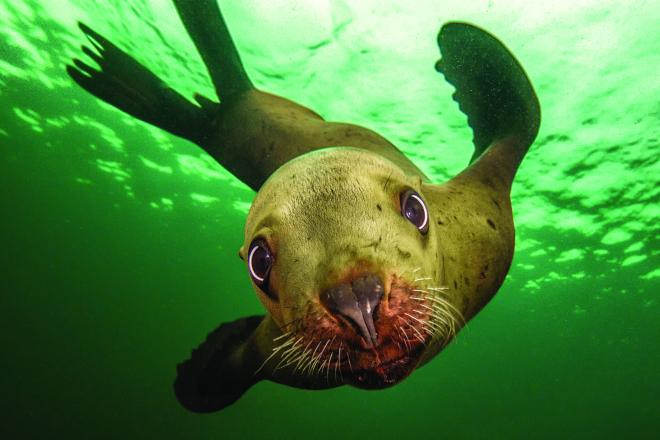
Art meets geology
The Salish Sea: Jewel of the Pacific Northwest features more than 230 photos from 55 photographers. At times, co-author Audrey Benedict worked directly with photographers to capture custom images for the book.
AB:
In some cases I wanted to start a chapter with a specific image to lead the reader into it. And chapter two, which is the geology of the Salish Sea, begins with that extraordinary mosaic of geologic diversity on that beach.
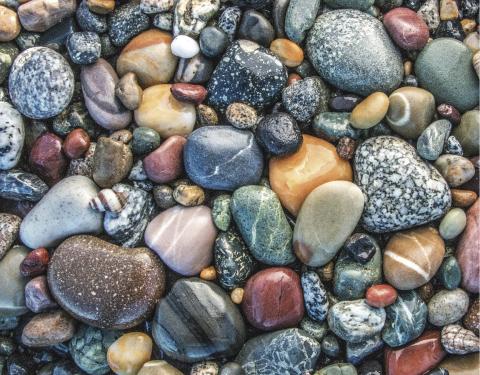
That was a situation where Wendy [photographer Wendy Shattil] was traveling with me and I took her to Birch Bay State Park. I marched up and down that beach until I found just the right patch of rock, because I wanted to show people that the diversity they see on many of the beaches in the Salish Sea reflects all the watersheds of the mainland. It’s all been delivered there—one long conveyer belt over millions and millions of years, and it’s exquisite. It’s as much art as it is geology. And so I am just speaking to that image because oftentimes what we needed to say would drive the image that we wanted to use to make that clear. And that’s not arranged. That’s the beach as it was. That was representative of that patch of beach at Birch Bay.


